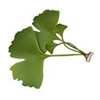| Home News and Events |

|
eCardioVascular BeatCommon herbal remedies’ interaction with medications
Naji Hamdan, M.D.
Cardiology, Providence St. Vincent Medical Center More than 15 million people in the United States consume herbal medicines. Many patients come in for an evaluation carrying bags filled with herbal supplements, questioning how safe these are when combined with other medications. Health care providers should have a good knowledge of herbal remedies and their side effects to identify possible herb-drug interactions. The following is a discussion of common herbal products – their uses, side effects and potential drug-herbal interactions, especially in patients with cardiovascular disease. 
HawthornKnown as the wise man’s digitalis, hawthorn has been used for centuries. Legend has it that the crown of thorns placed on the head of Jesus was made of hawthorn. Traditionally, hawthorn has been used for various cardiac conditions ranging from irregular heartbeat, hypertension and angina to congestive heart failure. It has vasodilatory and positive inotropic effects resulting in an increase of coronary circulation. Side effects
Herb-drug interactions
St. John’s wortThe plant blooms around June 24 in Germany, the traditional birthday of St. John the Baptist. When rubbed, red pigments release the active ingredient hypericin, which is said to symbolize the blood spilled when St. John was beheaded. One of the top-selling herbs in the United States, St. John’s wort is used for the treatment of mild to moderate depression, anxiety and sleep disorders. Side effects
Herb-drug interactions

GinsengIn Mandarin Chinese, the word ginseng literally means “root of man,” referring to the root’s forked shape that resembles the human body. It is classified as an adaptogen, a substance that helps the body resist the effects of physical and environmental stress. Side effects
Germanium is a contaminant that can be nephrotoxic by damaging the cell of the loop of Henle, thereby decreasing responsiveness to diuretics. Herb-drug interactions

GarlicIt has been used throughout history for both culinary and medicinal purposes. In both world wars it was used as an antiseptic to prevent gangrene. Garlic is used as an anti-bacterial, anti-viral and anti-fungal agent. It is also said to lower cholesterol. Side effects
Herb-drug interactions

LiquoriceThe active compound in this legume (related to beans and peas) is glycyrrhizin, a sweetener that is 50 times as sweet as sucrose, a food and tobacco flavoring. Medicinal uses include treating peptic and aphthous ulcers. It’s also used as a mild laxative, an anti-viral agent for shingles, and a treatment for oral and genital herpes. Side effects

Black cohoshThe root of this herb is used to decrease menopausal symptoms including hot flashes and night sweats, and to treat premenstrual symptoms. Side effects
Herb-drug interactions

Red yeast rice (RYR)Red yeast rice is the product of yeast that is grown on rice. It’s the ingredient that makes Peking duck glow red. RYR contains several compounds collectively known as monacolins, a substance known to inhibit the syntheses of cholesterol. One of these, monacolin K, is a potent HMG-CoA reductase known as Mevacor. When the FDA discovered that RYR contained a substance found in a prescription drug, it banned red yeast rice products that contained lovastatin. In 2003, red yeast rice products began to reappear. Many of them avoided the FDA restriction by not having appreciable monacolin content. Side effects
Herb-drug interactions

GinkgoIt is mainly used as a memory and concentration enhancer, anti-vertigo and anti-tinnitus. Side effects
It should be avoided with people who have bleeding disorders or epilepsy. Herb-drug interactions
As the popularity of herbal supplements continues to rise, so does the possibility that your patients are mixing one or more of them along with prescribed medications. So please keep these and other popular herbal remedies in mind when reviewing a patient’s drug interactions. |
|||||||||||||||||
|
|||||||||||||||||
|
Copyright © 2024 Providence Health & Services. All rights reserved. Clinical Trials | Quality and Outcomes | News and Events | About Us | Contact Us | Make a Referral |
|||||||||||||||||